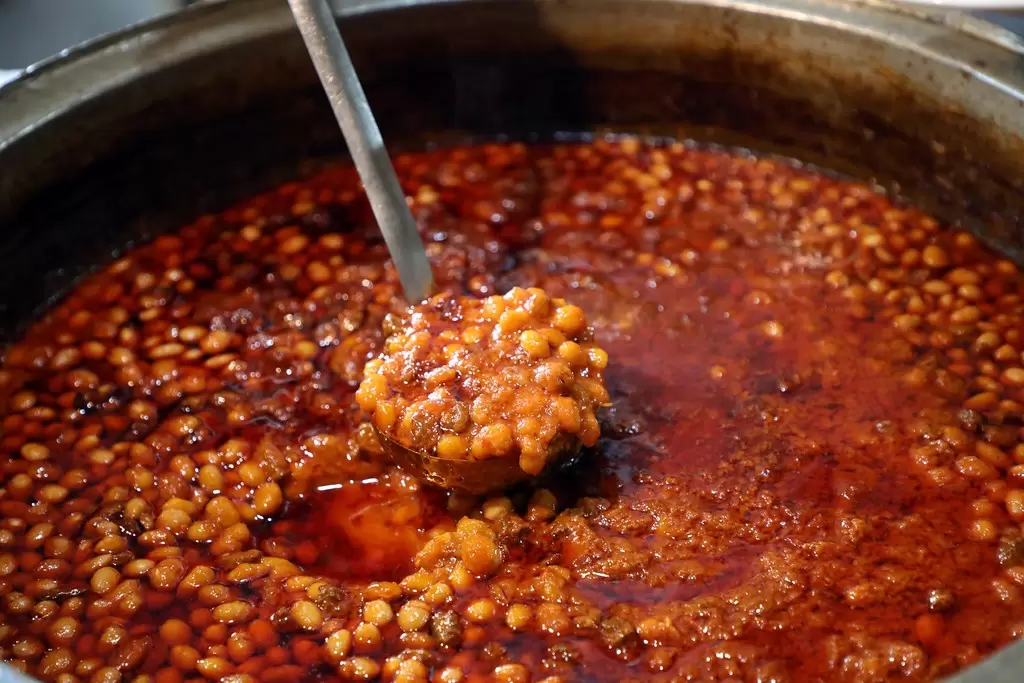
Antep Cheese, also known as Gaziantep Cheese or Antep Pressed Cheese, is a traditional and geographically indicated cheese originating from Gaziantep, Turkey. It holds a significant place in the region's culinary heritage, known for its unique production methods, rich flavor profile, and versatile use in both traditional and modern dishes.
Distinctive Features
-
Origin and Milk Source
Antep Cheese is crafted from the milk of sheep and goats grazed in the natural pastures of Gaziantep. These pastures are rich in aromatic plants, which impart distinct flavors and aromas to the milk. The cheese can be made from 100% sheep milk, 100% goat milk, or a mixture of 50% each, depending on availability and preference. -
Traditional Production Method
The production process involves hand-shaping the cheese, giving it its characteristic oval form resembling the palm of a hand. This traditional technique reflects the artisanal skills of local cheesemakers. The curd is cooked (hence the local name "Pişken") and pressed, resulting in a semi-hard cheese that is dense yet elastic. -
Texture and Appearance
Antep Cheese has a smooth, homogenous, and pore-free texture. Its color ranges from grayish to white, and it does not crumble when cut. Instead, it is firm yet pliable, making it easy to slice or shred. When consumed, it produces a subtle squeaky sensation on the teeth, adding to its distinctive character. -
Aroma and Flavor
With a complex aroma profile featuring 49 active compounds and 64 aroma-influencing substances, Antep Cheese offers a rich and layered flavor. Volatile components such as ketones, esters, alcohols, lactones, terpenes, aldehydes, and aromatic hydrocarbons contribute to its unique taste. The cheese is slightly tangy, savory, and aromatic, reflecting the quality of the milk and the skill of its producers. -
Versatility in Consumption
Antep Cheese can be consumed fresh or matured in brine, depending on preference. When fresh, it is softer and less salty, ideal for breakfast or as an ingredient in salads and pastries. When brined, the cheese develops a more robust flavor and firm texture, making it perfect for grating over traditional dishes or as a standalone delicacy. -
Physical Properties
The cheese's oval shape typically measures between 6 and 10 centimeters across its longest dimension. This distinctive form is a result of traditional hand-shaping techniques and reflects its artisanal nature.
Cultural and Culinary Significance
Antep Cheese is an integral part of Gaziantep’s rich culinary traditions. It is used in various dishes, from savory pastries like börek to hearty casseroles and salads. It also pairs excellently with fresh bread, olives, and local wines, making it a versatile ingredient in regional gastronomy. The cheese's unique characteristics and high-quality production methods have made it a symbol of Gaziantep’s food culture.
Preservation of Authenticity
As a geographically indicated product, Antep Cheese is protected to ensure that its traditional methods, ingredients, and qualities remain intact. Producers adhere to strict guidelines to maintain its high standards, ensuring the cheese retains its authentic flavor and texture.
Nutritional Value
Rich in protein, calcium, and essential vitamins, Antep Cheese is a nutritious addition to any diet. The quality of the milk and the absence of additives contribute to its natural and wholesome profile.
Culinary Experience
Antep Cheese is more than just a food item—it is a culinary experience that showcases the craftsmanship, traditions, and flavors of Gaziantep. Whether enjoyed fresh or brined, it offers a taste of the region's agricultural bounty and artisanal expertise.
Symbol of Gaziantep’s Heritage
As one of Gaziantep’s most renowned products, Antep Cheese embodies the region’s dedication to quality and tradition. Its production and widespread appreciation both locally and internationally make it a cornerstone of the area's gastronomic identity.
For visitors exploring Gaziantep, tasting Antep Cheese is an essential part of experiencing the region's rich culinary legacy.


















